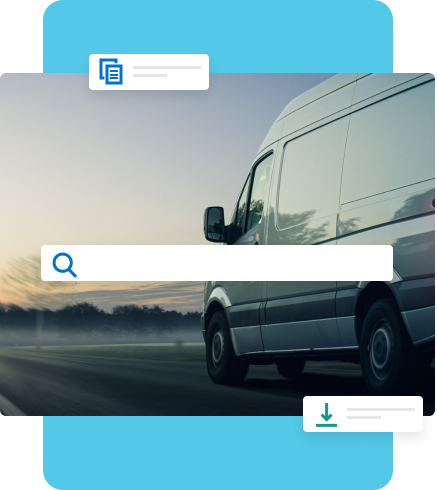Guest blog post by Gilad David Maayan
Despite the fierce competition in the e-commerce market, it is estimated to reach a 276.9 percent increase in global sales by 2021, most of it centered in the Asia Pacific (ACAP) region. Technological advancements and modern business models provide the e-commerce market with an elasticity that expands to make room for new ventures and increased revenues.
As the market shifts to international online retail, shipping and delivery become vital to securing a sale. Today’s e-commerce market centers around creating a seamless, efficient, and simple purchase cycle for the modern consumer. However, many companies lose customers at the cart, processing and dispatch stages due to a poor delivery experience.
How to Create a Positive Delivery Experience
Amazon have been leading e-commerce since its inception. Their delivery is not just a stage in the customer purchase cycle anymore—it’s a full-fledged service that offers flexible delivery methods, fast same-day shipping, and product refill subscriptions. They even experiment with delivery drones.
While most companies can’t afford a delivery drone you can still offer consumers control, flexibility, and speed by creating a unique delivery infrastructure that fits your business. You can keep delivery operations in-house, partner with third-party logistics firms (3PL), or create a strategy that utilizes both methods.
In-House vs Third-Party Delivery
With in-house delivery, you retain full control over the delivery operations from start to finish. You allocate resources for storing, managing and delivery stock. You decide which vehicles you want to include in your delivery fleet, how many, and you hire and manage the drivers and their routes. You’re responsible for every aspect of the delivery operations.
Opting for the third-party delivery model means relinquishing control in favor of clearing up time and energy or gaining an advantageous partnership. Third-party delivery providers can provide you with a customized end-to-end delivery solution or serve as a specific tool that supports the entire delivery infrastructure.
In-House vs Third-House Delivery – Cons and Pros
Keeping every aspect of the delivery in-house empowers companies with control over customer satisfaction and brand awareness. You can make sure your customers are happy with every aspect of the delivery and implement modifications on a regular basis. If you take the time to create a solid in-house delivery strategy, you can even reduce expenses over the long-term.
On the other hand, third-party providers offer vast experience and affordable resources that can help companies scale at a moderate pace, or expand delivery operations without incurring overhead. You can partner with as many third-house delivery providers as needed to create the delivery solution that fits your business best.
Creating a Positive Delivery Experience
With In-house delivery, you can create a streamlined delivery system that caters to your customer’s needs based on market research and in-house data analysis and surveys. If you hire a third-party delivery provider for last-mile delivery you’ll have no say over the delivery experience. In this case, you’ll make use of an existing delivery system without the ability to customize the process and guarantee customer satisfaction.
Maintaining a Positive Brand Awareness
Usually, delivery drivers are the only human contact between e-commerce companies and consumers. With in-house delivery, you retain control over hiring and training the drivers, which ensures the drivers act as a positive representation of your company. Third-party providers lend you use of their drivers, but you have no control over the drivers.
Building a Strong Relationship with Customers
In-house delivery creates an open and clear channel of communication between the e-commerce business and the consumer. The more third-party providers you add, the more communication barriers you erect between you and your customer. For example, if you have one third-party delivery provider for delivery and another for returns, this may cause potential breakdowns as clients and employees attempt to communicate.
Reducing Delivery Costs
In-house delivery infrastructure can inflate the overall expenses of your company at an alarming rate but may promote higher profit margins in the long-term. Allocating funds for vehicles, drivers, and delivery employees may not fit every business. Startups can benefit from leveraging the ready-made infrastructure offered by third-party providers. When it comes to costs and budgets, make sure you choose a delivery method that fits your business.
Setting Realistic Priorities
Make sure you have the necessary resources for managing and monitoring delivery in-house because delivery logistics can be complicated and time-consuming. Handing this responsibility over to a third-party provider can clear up a substantial amount of time and energy. It’s up to you to define how to use your time and energy. You might want to focus on the product or improving UI/UX rather than managing logistics.
Implementing Business Intelligence
In-house delivery gives you the power to implement your own delivery business intelligence (BI) system. Setting up a smart data management infrastructure can help you collect, monitor, and analyze every aspect of the delivery cycle. Insights derived from your in-house BI can help you improve operations, reduce costs, and improve customer satisfaction. With third-party delivery providers, you’re restricted to an existing system and the accompanying data, which may be limited.
How to Create a Delivery Infrastructure
As the world shifts into innovative service-oriented models, we see an increase in delivery and shipping solutions. Nowadays, it’s not so much a matter of choosing between in-house and third-party delivery, but creating a delivery system that incorporates the elements that fit your business best.
The following list of criteria might help you choose the delivery solutions that correspond with your company’s needs:
- Experience—in-house delivery requires an exhaustive list of skills and a solid educational base. If you lack experience and funds, consider partnering with a third-party provider.
- IT resources—can you meet delivery needs with accessible technology? If not, you might opt to partner with a third-party provider. Efficient in-house delivery leans heavily on the support of technology.
- Budget—third-party delivery models offer affordable prices, but may reduce profit margins in the long term. However, unless you can support a full in-house budget on a regular basis, you might be advised to combine your resources with a third-party provider.
Achieving a High Level of Productivity with Delivery Solutions
Now that you have considered the pros and cons of in-house and third-party delivery models, you can create your own delivery infrastructure. No matter which model you opt for, make sure it’s supported by the right technology.
Here’s a quick rundown of the available delivery solutions:
- Couriers—companies specializing in shipping and delivery.
- Fulfillment centers—companies that take care of last-mile delivery stages such as managing stock, and packaging delivering orders.
- Route optimization—a system that integrates into your delivery infrastructure and helps you, monitor, manage and analyze delivery routes through smart automation.
- Customer ratings—an integrated piece of technology that gives your customers the option to rate the delivery experience real-time.
- Reverse logistics management—promotes efficient logistics management and chain of custody through a streamlined and automated process.




